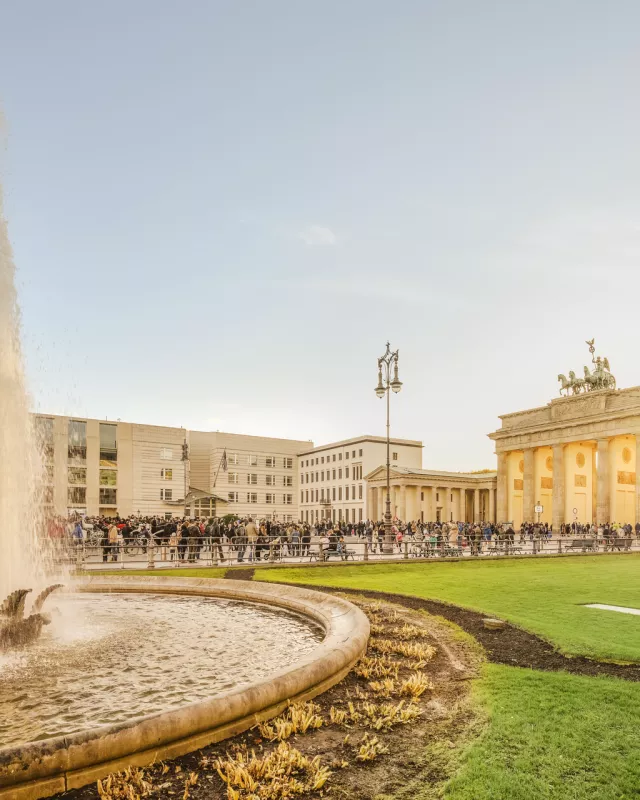Berlin is now in the league of cities with 30 million overnight stays
Berlin, 18 February 2016 Berlin tourism has exceeded a new record: The State Statistical Office recorded more than 30 million overnight stays by visitors from around the world in 2015. In the last five years, the numbers have increased by 10 million from 20.8 to 30.25 million overnight stays. The share of overnight stays by German guests is the highest at nearly 55 per cent. The number of guests from abroad is also steadily increasing.
Berlin's governing mayor, Michael Müller, says: "Tourism is and shall remain a success story. The cosmopolitan and tolerant capital of Germany is becoming more popular internationally, as a destination to visit, as a place to live, or as a filming location of international productions. Tourism is therefore an important economic factor for our city and an important element for promoting our culture. I would like to thank everyone who has contributed to this sensational development".
Burkhard Kieker, CEO of visitBerlin: "Berlin's magnetism as a world city remains unbroken, increasingly among guests from other continents. The world is a guest in our city".
Michael Zehden, chairman of the supervisory board of visitBerlin: "These figures would not be possible without the excellent cooperation of the city and the private sector, especially the hotels. This is precisely what is reflected in our marketer visitBerlin. As a public private partnership, visitBerlin combines the interests of the city and its citizens with the interests of the private tourism industry.
Berlin is becoming more attractive, especially abroad
With their stays in Berlin, international guests have a large share in the increase in numbers: Around 45 per cent of overnight stays come from international guests (German tourism in total: 17.8 per cent from abroad). More than two-thirds (70 per cent) of the overnight stays from foreign guests can be traced back to European visitors. At 1.5 million, most visitors come from the UK.
While Italy was the country with the most visitors to Berlin behind the UK last year, this year the US took second place among the markets of origin: More than one million overnight stays were generated by US guests – 17 per cent more than in 2014.
Countries outside of Europe are responsible for a share of around 30 per cent of the overnight stays. After the US, the most important markets for Berlin are Brazil and Canada. The growth champions from overseas come from Asia and the Middle East. Taiwan (45.1%), South Korea (34.7%) and the Arab Gulf states (30.3%) recorded particularly high growth rates.
Every sixth international overnight stay in Germany is allocated to Berlin
If you compare the international overnight stays in Berlin in 2015 (13.7 million) to tourism in Germany (79.7 million), every sixth hotel overnight stay by international visitors falls on a Berlin hotel bed. At 5.4 per cent, the overnight figures for Berlin are growing almost twice as fast as those of tourism in Germany (+3%).
Convention business is booming: Hotel overnight stays from conference guests increased by 7 per cent
The conference location of Berlin is still on the course for growth: Last year, more than 11.37 million participants (+4% compared to 2014) came to around 135,000 events (+3%) in the German capital. This is evident from the annual convention statistics of the Berlin Convention Office of visitBerlin.
The Berlin hotel industry in particular is benefiting from the conference and convention business: In 2015, the event market generated 7.5 million overnight stays (+7%), which represents a quarter of all hotel overnight stays in Berlin. In the past decade, the overnight stays from convention participants increased by 86 per cent.
Many international participants
2.3 million event participants came from abroad in 2015. Every fifth visitor was therefore an international guest. The most important foreign market is Europe.
The capital is particularly in demand as a location for medicine and science events: 12 per cent of conferences and congresses can be allocated each to the industries of "medicine, science and research" and "IT, electronics and communication" followed by "politics and public institutions" with eleven per cent.



